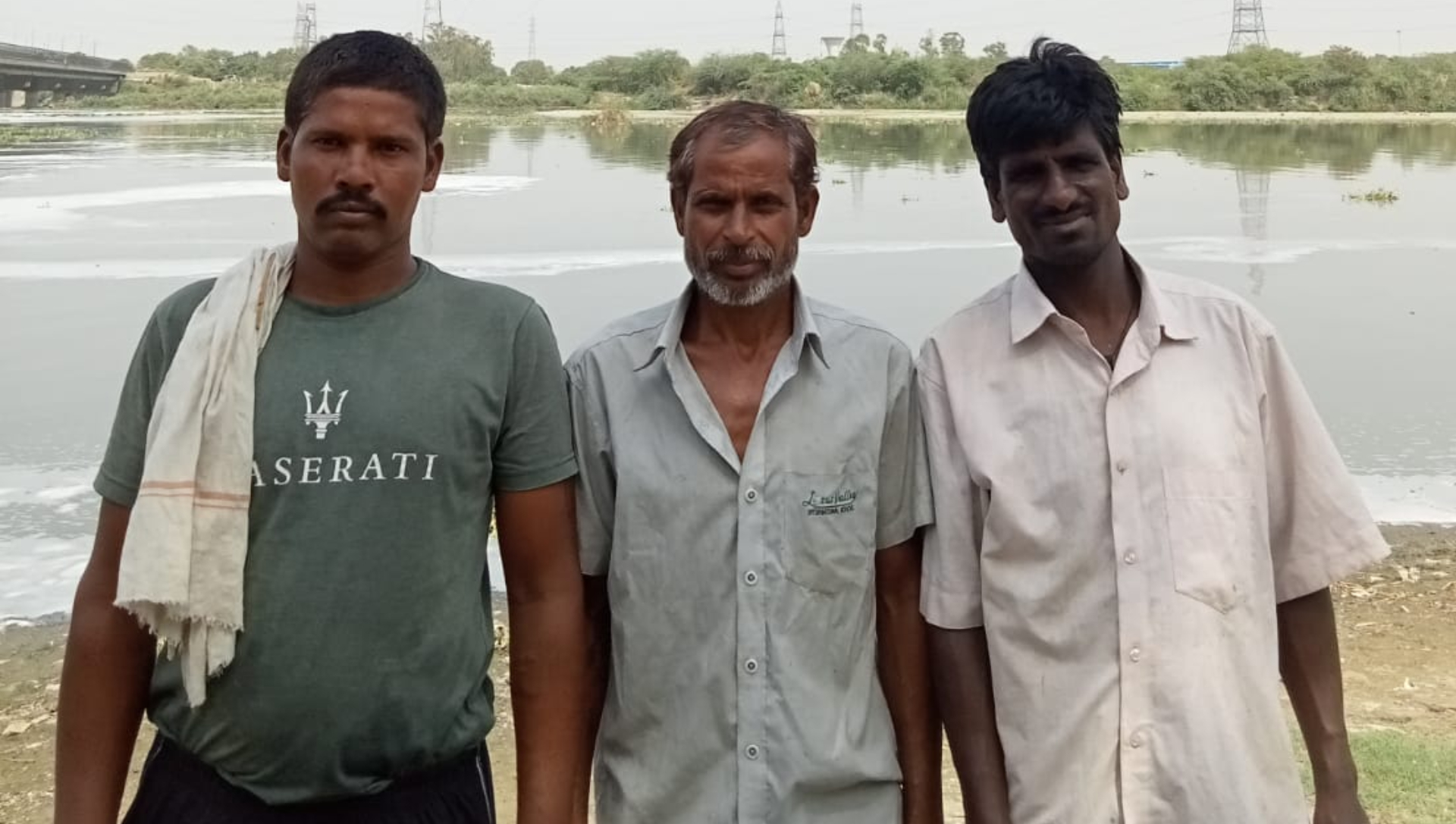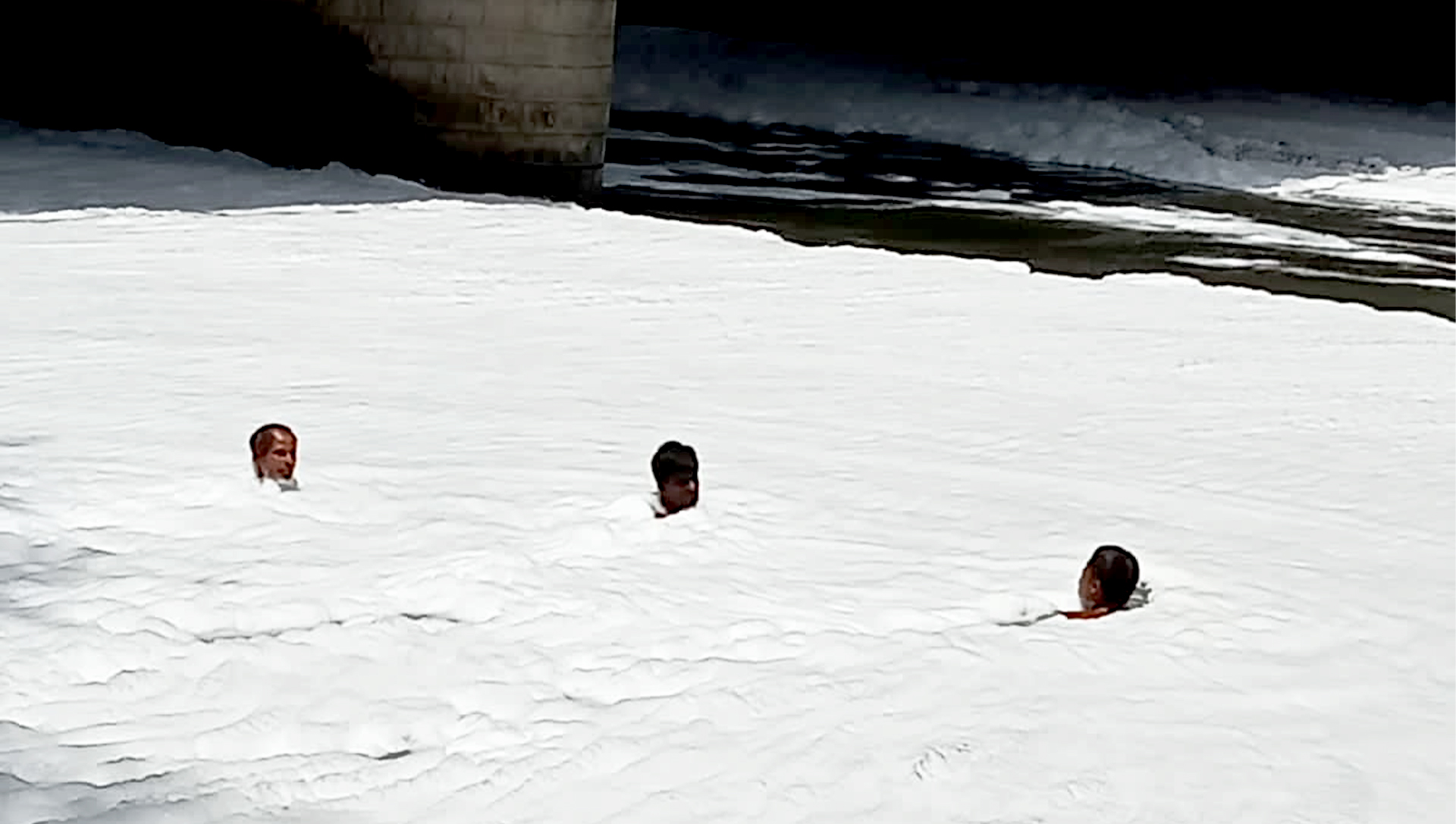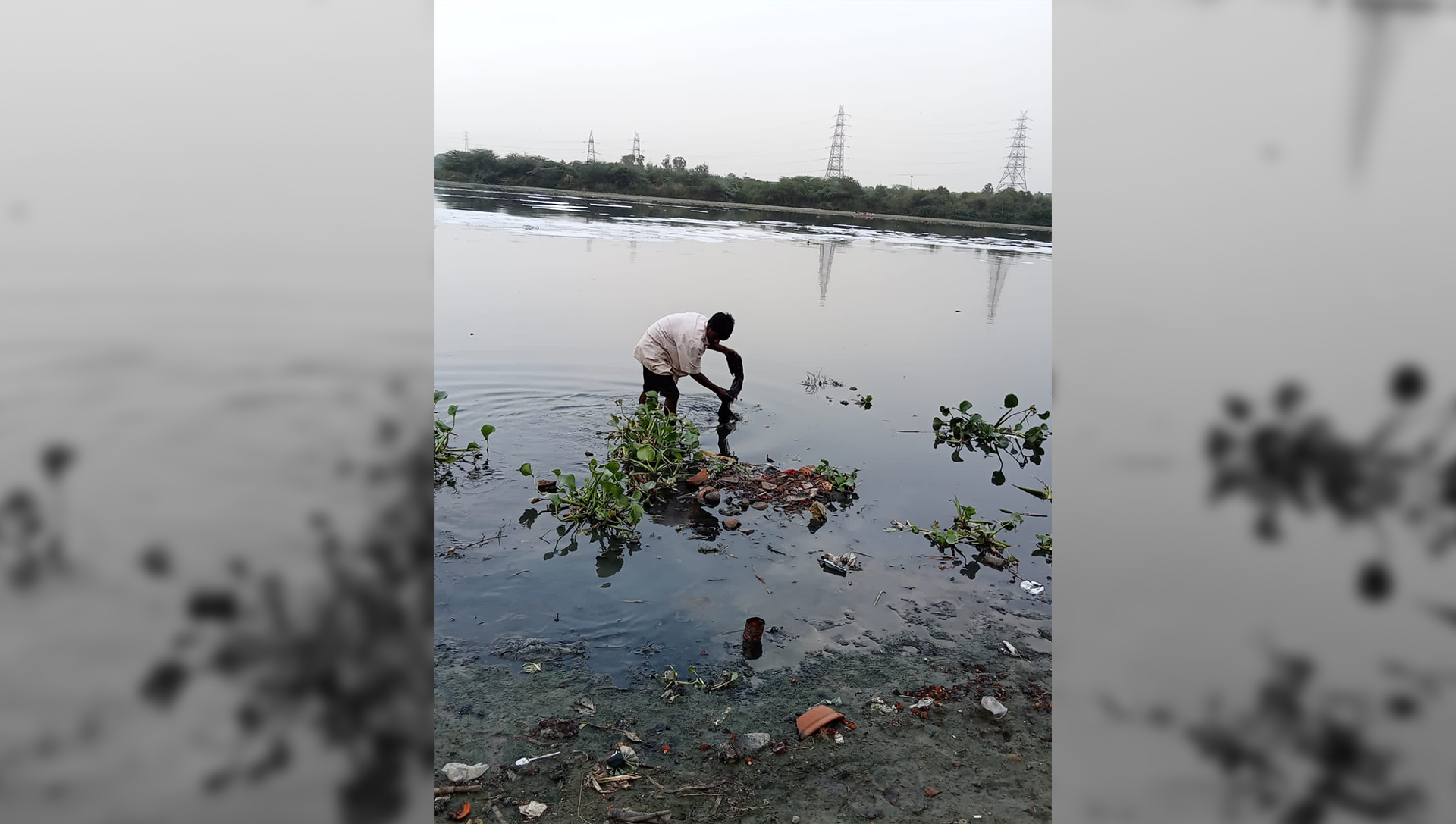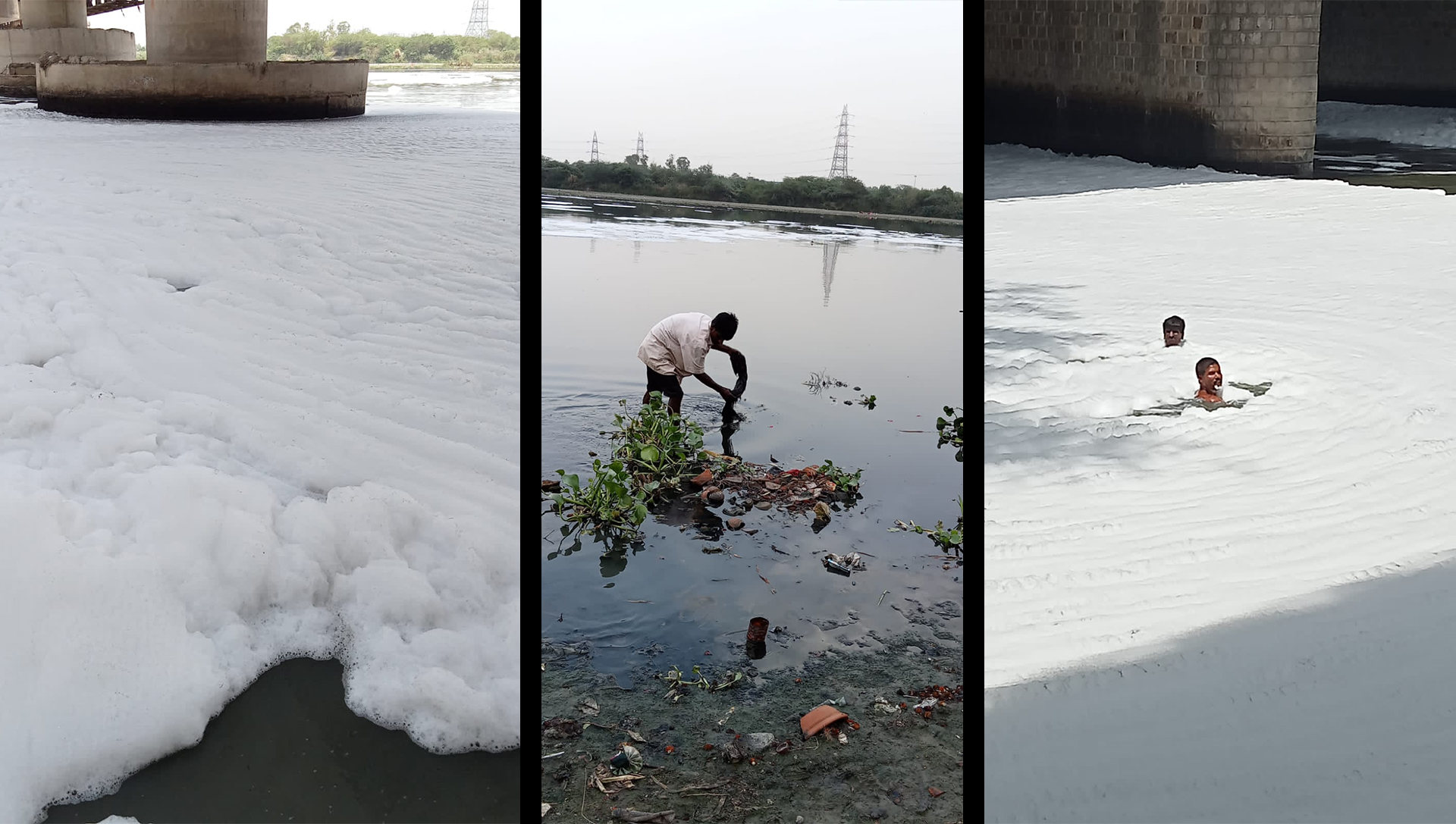NEW DELHI: The lifeline of Delhi-NCR, Yamuna is once again in the limelight for all the wrong reasons as the toxic froth is seen floating on the sacred river for the past month and a half.
Untreated industry effluents and chemical waste formed a blanket of foam that resulted in a pungent smell while affecting the health of many who came to ITO Chhath Ghat for various purposes.
Experts stated that the main reason behind frothing in the river is the untreated effluent discharged from water-intensive industries in Delhi, Haryana and Uttar Pradesh.
Workers who come to the Ghat every day in search of work breathe this toxic air which leads to serious respiratory, eye and skin problems over time.
As The New Indian visited the site in the morning, commoners who went to perform rituals, the workers and children present there complained of the government’s indifference to finding a solution.
Lalmaan, 50, who comes to the Ghat every morning in search of work, said, “We have become sick and tired of making complaints but nothing changed, neither industry pollutants stopped coming nor we received clearer water. The situation improves but the toxicity remains. Breathing this toxicity for ages leads to respiratory issues and eye problems but when it’s a question of livelihood, we have to compromise everything, even our health.”

Another worker Mohd. Zakir said, “People come and go but we stay here throughout the day and it becomes difficult for us. We know how we are surviving. We request the government to look at this issue as it’s not happening for the first time.”
The froth and the foam in the river got into national headlines especially during Chatth Puja when women were seen standing knee-deep in foam offering Puja.
Speaking to The New Indian, Dr Manoj Kumar, senior director, Cardiology, Max hospital, said, “The formation of toxic froth in the Yamuna has an immediate effect on human lives. It can produce allergies, skin dermatitis and many such skin issues. However, the long-term effects can be detrimental as it can affect the neurological and endocrinal system severely.”
Several studies have stated that the 22 km long stretch of the Yamuna between Wazirabad and Okhla alone accounts for around 80 per cent of the total pollution.

Varun Gulati, an environmentalist, said, “Delhi has 26 approved industrial areas out of which only 13 have Common Effluent Treatment Plants (CETPs) installed in it. There are 27 redevelopment areas where there is no CETP despite these areas being approved by the commissioner of industries on condition that they should install CETP in the area within three years of approval of their area as re-development area.”
“Shockingly, none of these 27 industrial areas has installed CETP and to date, thousands of illegal water-intensive units are operational like electroplating and jeans dyeing. As both these trades need a huge amount of water which they extract through illegal borewells and same in being discharged untreated without treatment through ETP,” Gulati said.
In March DJB announced plans to set up a 200 TPD (tonnes per day) capacity sludge treatment plant at its Kondli sewage treatment plant (STP). In the coming two years Delhi govt is also planning to set up its sludge treatment facility for all its STPs.
But Gulati is cautious. “One should understand that STP can only treat wastewater generated from a domestic source. They are not treating the wastewater generated from industries,” he pointed out.
According to an RTI reply received from National Mission for Clean Ganga (NMCG), the Delhi government has received funds to the tune of Rs 3200 crores from NMCG as well as the Central government for the installation of the new STP. Experts suggested that instead of spending the fund on new STPs, the Delhi government needed to upgrade the existing STPs.

Industries operational in the Barhi Industrial area in Sonipat are discharging untreated effluent which is then bypassed by CETP and discharged in Drain No.6 which then reaches Delhi at Wazirabad. It contains huge detergent waste along with deadly heavy metals, observes Gulati.
Industrial areas like Roop Nagar and Arya Nagar are equally responsible for adding the toxicity along with industries in Tronica city as hundreds of illegal dyeing units are operational to date.
Bhavreen Kandhari, a Social environmentalist observes, “On Yamuna and Hindon edges, scores of farmhouses and polluting industries are discharging pollutants into the river. Also, there are about 92 drains that fall directly into the Yamuna and out of which 62 drains are untapped. Therefore, due to negligence, Yamuna has now turned into a drain. And quite surprisingly, the green panel dissolved the Yamuna Monitoring Committee in January.”
“We can save the river only if the government has the true intent to work on the sources of pollution and not hiring equipment worth millions to do photo optic exercise,” the Environmentalist adds.
In 2021 Central Pollution Control Board (CPCB) convened a meeting in January, with the officials of the Delhi Pollution Control Committee (DPCC), Haryana State Pollution Control Board (HSPCB), Delhi Jal Board (DJB), Irrigation & Water Resources Department, Haryana and Irrigation and Flood Control Department, Delhi, to discuss the recurring issue of increased in Ammonical Nitrogen in River Yamuna and short and long term remedial actions required.
Environmentalists said the Yamuna needs a special watchdog just for assessment of pollution potential and its cleaning as just making policies won’t get it cleaned till illegal dyeing and electroplating units are operational in residential areas and redevelopment areas.










